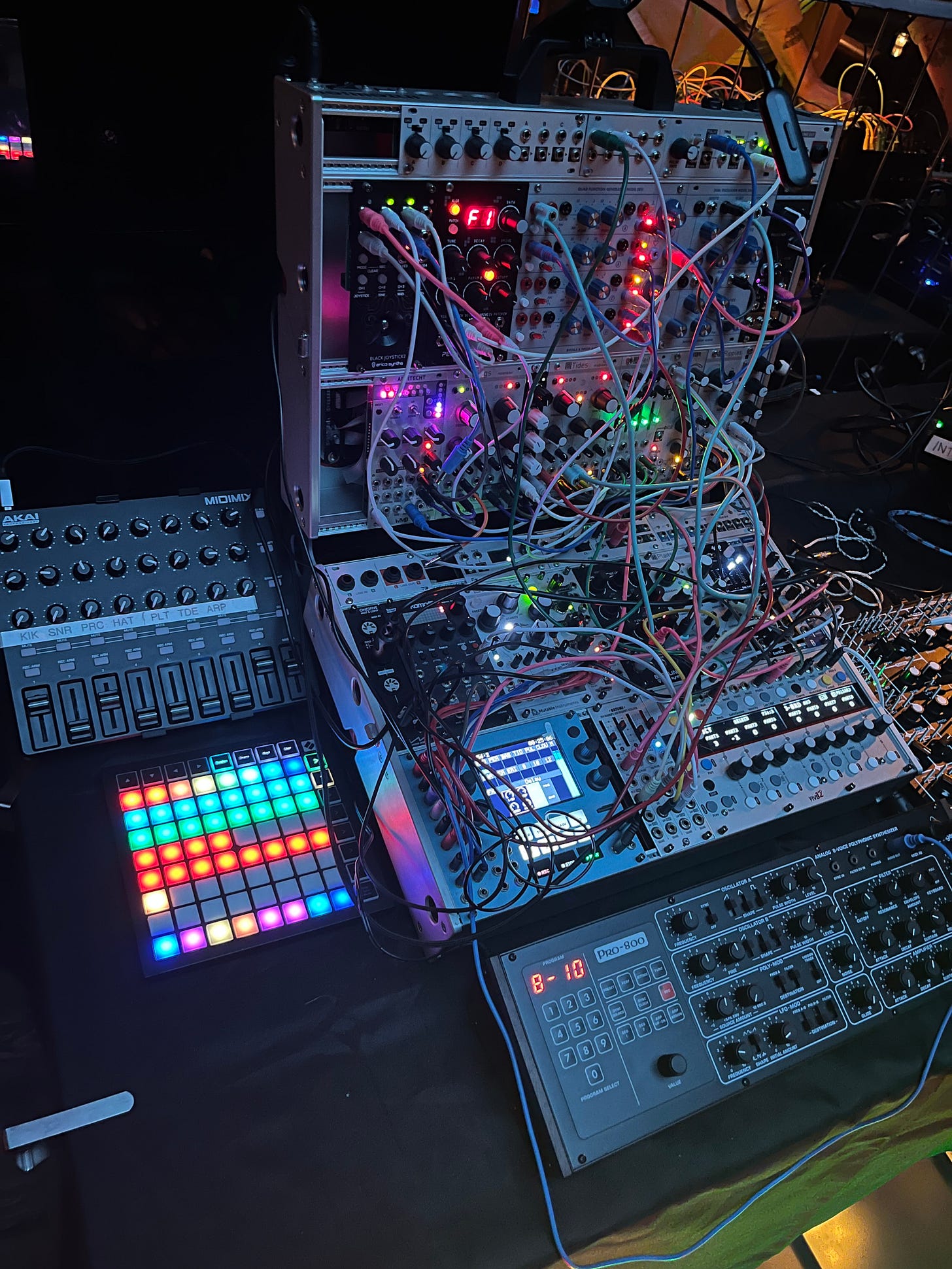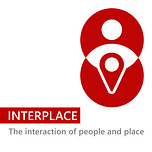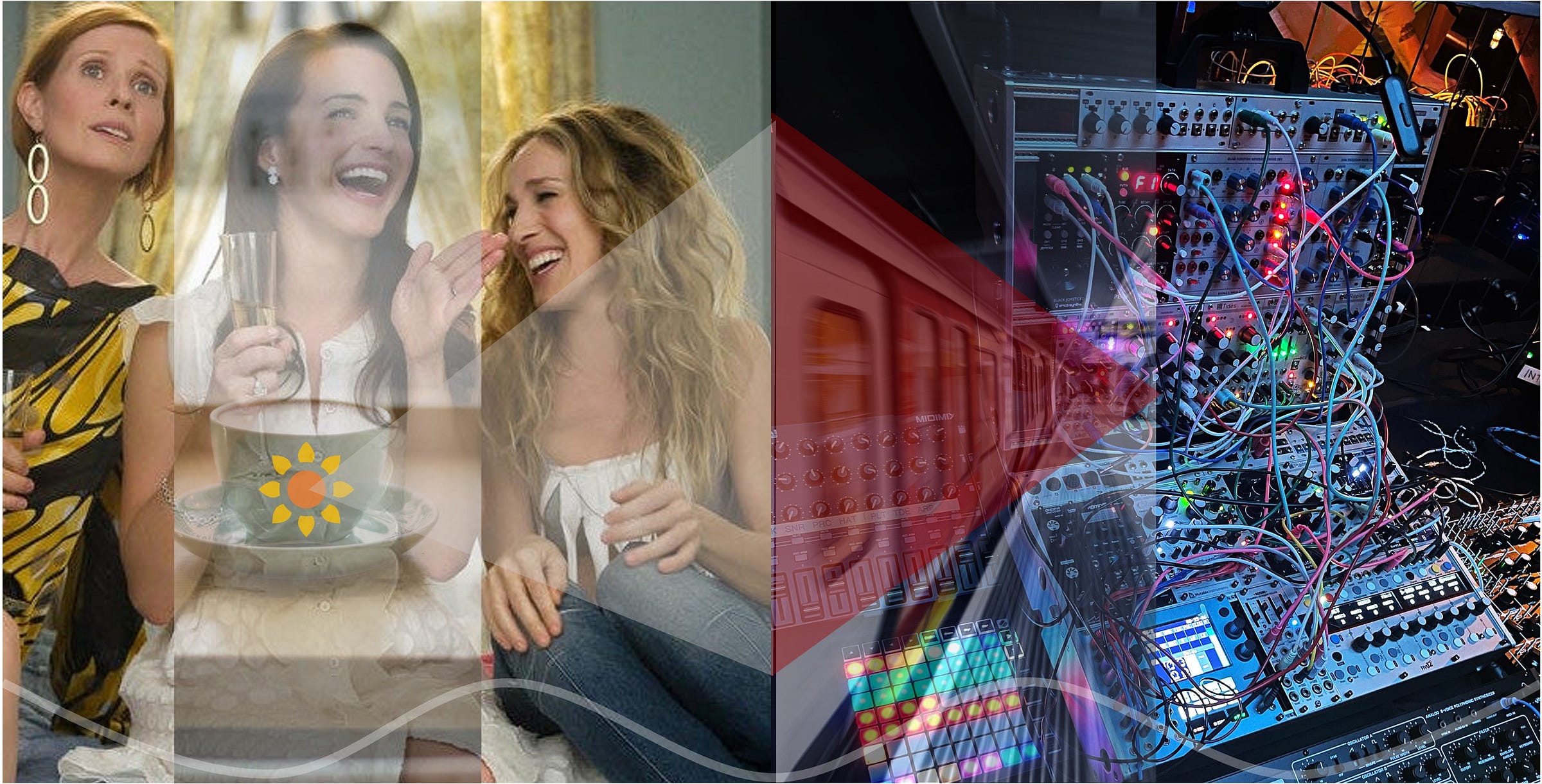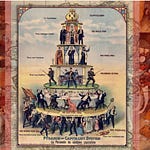Hello Interactors,
My daughter in Manhattan’s East Village sent me an article about the curated lives of the “West Village girls.”1 A few days later, I came across a provocative student op-ed from the University of Washington: "Why the hell do we still go to Starbucks?"2 The parallels stood out.
In Manhattan’s West Village, a spring weekend unfolds with young women jogging past a pastry shop in matching leggings, iced matcha lattes in hand. Some film it just long enough for TikTok. Across the country, students cycle through Starbucks in Seattle’s U-District like clockwork. The drinks are overpriced and underwhelming, but that’s not the point. It’s familiar. It's part of a habitual loop.
Different cities, similar rhythms. One loop is visual, the other habitual. But both show how space and emotion sync. Like an ambient synth track, they layer, drift, and return. If you live in or near a city, you exist in your own looping layers of emotional geography.
FLASH FEEDS
My daughter has been deep into modular synthesis lately — both making and listening. It’s not just the music that intrigues her, but the way it builds: loops that don’t simply repeat, but evolve, bend, and respond. She’ll spend hours patching sounds together, adjusting timing and tone until something new emerges. She likens it to painting with sound. Watching her work, it struck me how much her synth music mirrors city life — not in harmony, but in layers. She’s helped me hear urban rhythms differently.
Like a pop synth hook, the Flash loop is built for attention. It's bright, polished, and impossible to ignore. Synth pop thrives on these quick pulses — hooks that grab you within seconds, loops that deliver dopamine with precision. Urban spaces under this loop do the same. They set a beat others fall in line with, often flattening nuance in exchange for momentum.
This isn’t just about moving to a beat. It’s about becoming part of the beat. When these fast loops dominate, people start adapting to the spaces that reflect them. And those spaces, in turn, evolve based on those very behaviors. It’s a feedback loop: movement shaping meaning, and meaning shaping movement. The people become both the input and the output.
In this context, the West Village girl isn’t just a person — she’s a spatial feedback loop. A mashup of Carrie Bradshaw nostalgia, Instagram polish, and soft-lit storefronts optimized for selfies. But she didn’t arrive from nowhere. She emerged through a kind of spatial modeling: small choices, like where to brunch, where to pose, where to post are repeated so often they remade a neighborhood.

Social psychologist Erving Goffman, writing in the 1950s, called this kind of self-presentation "impression management."3 He argued that much of everyday life is performance. Not in the theatrical sense, but in how we act in response to what we expect others see. Urban spaces, especially commercial ones, are often the stage. But today, that performance isn’t just for others in the room. It’s for followers, algorithms, and endless feeds. The “audience” is ambient, but its expectations are precise.
As places like the West Village get filtered through lifestyle accounts and recommendation algorithms, their role changes. They no longer just host people, but mirror back a version of identity their occupants expect to see. Sidewalks become catwalks. Coffee shops become backdrops. Apartment windows become curated messes of string lights and tasteful clutter. And increasingly, the distinction between what’s lived and what’s posted collapses.

This fast loop — what we might call spatial virality — doesn’t just show us how to act in a place. It scripts the place itself. Stores open where the foot traffic is photogenic. Benches are placed for backdrops, not rest. Even the offerings shift: Aperol spritzes, charm bars, negroni specials sold not for taste but for tagability.
These are the high-tempo loops. They grab attention and crowd the mix. But every modular synth set, like a painting, needs contrast.
So some people opt out, or imagine doing so. Not necessarily with loud protest, but quiet rejection. They look for something slower. Something that isn’t already trending...unless the trend of routine sucks you in.
PULSING PATTERNS
If Flash is the pop hook, Pulse is the counter-melody. It could be a bassline or harmony that brings emotional weight and keeps things grounded. In music, you may not always notice it, but you'd miss it if it were gone. In cities, this loop shows up in slow friendships, mutual aid, and cafés that begin to feel like second homes. These are places where regulars greet one another by name. Where where hours melt through conversations. It satisfies a need to be seen, but without needing to perform. It’s what holds meaning when spectacle fades.
If the fast loop turns space into spectacle, the counter loop tries to slow it down. It lures the space to feel lived in, not just liked. It’s not always radical. Sometimes it’s just choosing a different coffee shop.
Back in Seattle’s University District, students do have options. Bulldog News. Café Allegro. George Coffee. These places don’t serve drinks meant to be posted. They serve drinks meant to be tasted. They’re not aesthetic first. They’re relational. These are small gestures that build culture.

Social psychologists Susan Andersen and Serena Chen describe this through what they call relational self theory.4 We don’t become ourselves in isolation. We become ourselves with and through others — especially those we repeatedly encounter. Think about the difference between ordering coffee from a stranger versus someone who knows you like sparkling water with your Cortado. It’s a different kind of transaction. It eases things. It reinforces your own loop.
So why do people routinely return to Starbucks? It isn’t just about caffeine addiction. It’s about being part of a socially reinforced rhythm — anchored in convenience, recognition, and the illusion of choice.
Stores like Starbucks are often strategically located for maximum accessibility and convenience. They're nestled near transit hubs, along commuter corridors, or within high-traffic pedestrian zones. These placements aren’t arbitrary. They’re optimized to integrate into daily routines. It's less like a countermelody and more like a harmonic parallel melody. As a result, practical considerations like proximity, availability, and reliability often override ideological concerns.

People return not because the product is exceptional, but because the store is exactly where and when they need it. The Starbucks habit isn’t only about routine, but rhythmic predictability that appears personal. In this sense, it functions as a highly accessible pulse: a loop that’s easy to join and hard to break. It's made of proximity, subtle trust, and convenience, but is dressed as choice.
My daughter's chosen counter loop lives in the East Village — not far, geographically, from the Instagram inspired brunch queues of Bleecker Street. Her loops are different. She carries conversations across record stores, basement venues, bookstores with hand-scrawled signs, and a few stubborn restaurants.
These are Places where the playlists aren't streaming through Spotify. Her city isn’t organized around visibility. It’s organized around presence. Around being seen to be honored and remembered. Like the bookstore dude who knows the lore on everyone, or the cashier who waves her through without paying, or her Brooklyn bandmate friends who fold her in like family.
Sure, this scene intersects with the popular loops — modular synths are having a moment — but it sidesteps the sameness. It stays unpredictable, grounded in curiosity and care rather than clicks. The gear is still patched by hand. The performances are messy and often temporary. And yet, the loops — literal and figurative — keep returning. Not because they’re engineered for attention, but because they allow people to build something slowly...together...from the inside. Especially when done in partnership with another synthesist.

You might see this in your own city. The quiet transformation of spaces: a café hosting a poetry night; a yoga studio turned warming shelter during the storm; a laundromat that leaves a stack of free books near the dryers. These are not accidents. They are interventions. Sometimes small, sometimes subtle...but always deliberate.
They stand in contrast to the churn of the viral. They also offer an alternative to despair. Because the counter loop isn’t just critique. It’s care enacted. And care takes time.
Still, even pulsing care needs structure. It needs floor drains, power outlets, and open hours. It needs a stable substructure.
UNDERCURRENT UNDERTONES
Undertone is the foundational structure on which other elements are built. It's the core of modular synth music. This isn’t just rhythm. It’s the subtle, slow, and reactive scaffolding. These core loops evolve and shift setting the timing and emotional tonality for everything else.
They don’t dominate, but they shape the flow. They respond to what surrounds them to ground the composition. Cities, too, have these base layers. Often imperceptible, they are visceral, ambient, and persistent. They come into focus with the smell of rain on warm pavement. The clink of a key in a front door. These are not songs you hum, they’re the ones your heart and lungs make.
Long before the influencer run clubs, celebrity shoe stores, and curated stoops, there was the mundane sidewalk. Not the kind tagged on a friend’s story or filtered through the latest app. Just concrete. Scuffed by strollers, scooter wheels, boots, and time. The sidewalk doesn’t follow trends, but it does remember them.
Cities are built on these undertones: habitual routes, early deliveries, overheard exchanges, open signs flipped at the same hour each morning. They aren’t glamorous. They don’t go viral. But they are what hold everything together.
Urban scholar Ash Amin calls this the “infrastructure of belonging.”5 In his work on ordinary urban life, he writes that much of what connects us isn’t spectacular. It’s what happens when people brush past one another without ceremony: the steady hum of life happening without the need for headlines. Cities function not just because of design, but because of everyday cooperation — shared rhythms, implicit trust, systems that keep working because people show up.
It can seem mundane: a delivery driver making the same drop, a retiree watering the sidewalk garden they planted without permission, the clatter of trash bins returning to their spots. These moments don’t make the city famous, but they do make it work.
Even the flashiest loops rely on them. The West Village girl’s curated brunch only happens because someone sliced lemons before sunrise and wiped the table clean before she sat down. The Starbucks habit loop in the U-District clicks into place because the supply truck showed up at 5 a.m. and the barista clocked in on time. They’re the dominant undertone of cities: loops so steady we stop noticing them...until they stop. Like during the pandemic.
A synthesist might point to an LFO: Low Frequency Oscillator. These make slow drones that hum under a syncopated rhythm; a pulsing sub-bass holding space while textures come and go. The mundane in a city does the same: it holds the mix together. Without it, the composition falls apart.
If you’ve ever heard a modular synth set, you know it doesn’t move like pop music. The loops aren’t clean. They evolve, layer, drift in and out of sync. They build tension, release it, then find a new rhythm. Cities work the same way.
Their beauty isn’t always in sync — it’s in polyrhythm. Like when two synth voices loop at slightly different speeds: a saw wave pinging every three beats, a filtered drone stretching over seven. They collide, resolve, then drift again. Like when a car blinker syncs to the beat of a song and then falls out again. In modular music, this dissonance isn’t a flaw. It creates a sonic texture.

City rhythms don’t always align either. A delivery truck pulls up as a barista closes shop; protest chants counter a stump speech; showtimes shift with transit delays. These clashes don’t cancel each other out — they deepen the city’s texture, giving it groove.
Sociologists Scannell and Gifford call this place attachment: the slow accrual of meaning in a space through repetition, emotional memory, and lived interaction. It’s not always nostalgic.6 Sometimes it’s forward-looking. The act of building the kind of city you want to live in, one relationship at a time.
And beneath all of this, the city continues its own loop: subways running through worn tunnels, trash collected on quiet mornings, someone sweeping a shop floor before the door opens.
Both protest and performance rely on this scaffold. The Starbucks picket line doesn’t just appear. It’s supported by planning, scheduling, and shared labor. The music scene doesn’t just materialize. It's shaped by decades of flyers, friendships, and repeat customers.
The viral and the intentional both need the mundane.
Cities, when they work, are made of all three: the flash of now, the pulse of choice, and the undertone of the necessary. Like springtime flowers, the city creates blooms that emerge at the surface. They draw attention, cameras, and admiration. These blossoms don’t just attract the eye, they draw in pollinators who carry influence and energy far beyond the original scene.

But none of this happens without the rest of the plant. It’s the leaves that capture sunlight day after day, the roots that pulse the unseen through tunnels, the microbes that toil in the grime and dirt to nourish those all around them. Urban life mirrors this looping ecology. Moments that flash brightly, pulses that quietly sustain, and undertones that hold it all together. The bloom is what gets noticed, but it’s the layered and syncopated life below — repeating, decomposing, reemerging — that make the next blossom possible.
Sheridan, Margaret. The West Village Girls Are Changing How the World Sees NYC. 2024. The Cut.
Nguyen, Vicky. Why the Hell Do We Still Go to Starbucks? 2024. The Daily UW.
Goffman, Erving. The Presentation of Self in Everyday Life. 1959. Anchor Books.
Andersen, Susan, and Serena Chen. The Relational Self: An Interpersonal Social-Cognitive Theory. 2002. Psychological Review.
Amin, Ash. The Good City. 2006. Urban Studies.
Scannell, Lindsay, and Robert Gifford. Defining Place Attachment: A Tripartite Organizing Framework. 2010. Journal of Environmental Psychology.











